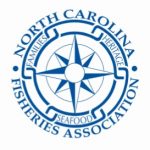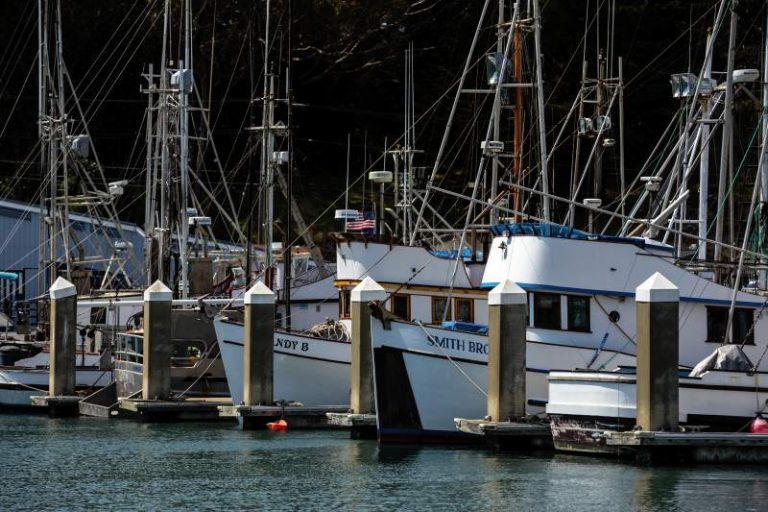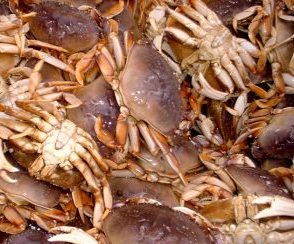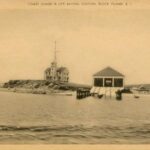Monthly Archives: December 2016
Fishing company Sanford Limited rails against Hauraki Gulf “Sea Change” plan
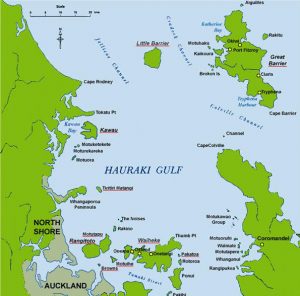 The plan called Sea Change -Tai Timu Tai Pari was unveiled in Auckland last night and suggests a blueprint to tackle growing problems like depleted seafood stocks, sediment damage and pressure from population growth around the gulf. Four years in the making, the collaborative blueprint consulted 14 community and governmental groups to find a way to improve the health and sustainability of the Hauraki Gulf. To reverse declining fish stocks it wants to phase out fishing methods such as trawling, Danish Seining, set netting and dredging. It suggests commercial fishing companies should instead concentrate on producing higher-quality fish, caught using long-lines. The fishing company Sanford is the biggest fisher in the area holding about 40 percent of the quotas in the Hauraki Gulf. The recommendations in the plan were based on emotions, not science, Sanford chief executive Volker Kuntzsch said. Read the story here 16:21
The plan called Sea Change -Tai Timu Tai Pari was unveiled in Auckland last night and suggests a blueprint to tackle growing problems like depleted seafood stocks, sediment damage and pressure from population growth around the gulf. Four years in the making, the collaborative blueprint consulted 14 community and governmental groups to find a way to improve the health and sustainability of the Hauraki Gulf. To reverse declining fish stocks it wants to phase out fishing methods such as trawling, Danish Seining, set netting and dredging. It suggests commercial fishing companies should instead concentrate on producing higher-quality fish, caught using long-lines. The fishing company Sanford is the biggest fisher in the area holding about 40 percent of the quotas in the Hauraki Gulf. The recommendations in the plan were based on emotions, not science, Sanford chief executive Volker Kuntzsch said. Read the story here 16:21
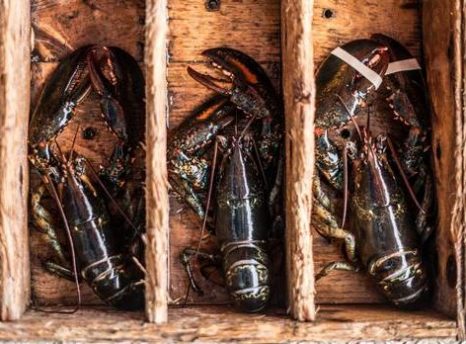
Pinched! Why Canadian Lobster in Unaffordable to most Canadians
The lobster salad at Toronto’s Nota Bene has been on the menu since George Bush’s son was U.S. president (that is, 2008). So when the dish of steamed Nova Scotia lobster, maple-smoked bacon, preserved dill, avocado and buttermilk ranch dressing disappeared in early fall, regulars noticed. Servers told querying patrons that the quality of lobster was not up to par. The harder truth was that the crustacean had gotten too rich for our blood. In the past five years, co-owner David Lee watched per-pound cost rise from around $9 to $12. Even if Nota Bene charged $29 for the appetizer, the dish would be unprofitable. “The price is just crazy,” Lee says. “And there’s only so much the guest will pay for lobster.” When it reached $16 a pound in September, he took the salad off the menu. People love to tell you, with the fanfare of revealing that Michael Caine’s real name is Maurice Micklewhite, that lobster was once so inexpensive and undesirable that it was fed to servants and prisoners. However, this is not back in the day. And to anyone fewer than 100 years old and not living on the Atlantic, lobster is a delicacy. Read the story here 13:34
Santa Cruz crabbers face a slow start to the season
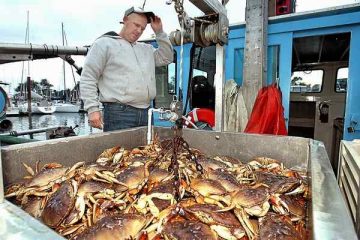 Three weeks into commercial crab season, Santa Cruz harbor fishermen are having a tough time finding crabs. “The season in Santa Cruz has been pretty slow,” said Hans Haveman of H&H Fresh Fish, a wholesale and retail fish seller at the harbor. “There’s crabs coming in, but not nearly in the numbers we would like or that we’d seen in the past few years.” The harbor has 15 to 20 active commercial crab boats that fish for the wildly popular Dungeness crab along with the less famous rock and spider crab, according to the Santa Cruz harbormaster. Three weeks into the season last year, each boat was bringing in an average of 800 to 1,000 pounds of crab a day, but this year that number has plummeted to about 100 to 200 pounds a day. “We don’t really know what’s going on,” Haveman said, who buys crabs from nine boats. Read the story here 11:13
Three weeks into commercial crab season, Santa Cruz harbor fishermen are having a tough time finding crabs. “The season in Santa Cruz has been pretty slow,” said Hans Haveman of H&H Fresh Fish, a wholesale and retail fish seller at the harbor. “There’s crabs coming in, but not nearly in the numbers we would like or that we’d seen in the past few years.” The harbor has 15 to 20 active commercial crab boats that fish for the wildly popular Dungeness crab along with the less famous rock and spider crab, according to the Santa Cruz harbormaster. Three weeks into the season last year, each boat was bringing in an average of 800 to 1,000 pounds of crab a day, but this year that number has plummeted to about 100 to 200 pounds a day. “We don’t really know what’s going on,” Haveman said, who buys crabs from nine boats. Read the story here 11:13
Commercial cod fishermen get more space in Kachemak Bay
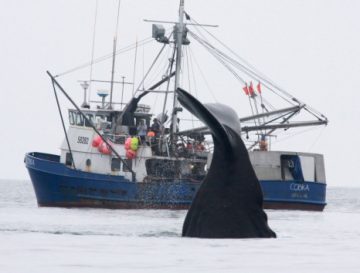 Commercial groundfish fishermen in Kachemak Bay will get more space to operate after the Board of Fisheries redefined the closed waters in the area. In Lower Cook Inlet, commercial fishermen are allowed to use pots to fish for Pacific cod and have been allowed inside Kachemak Bay west of the Homer Spit and along the southern shore of the bay near Seldovia. However, the main section and a swath extending westward in the center of the bay have been closed by regulation because of concerns for the Tanner crab population, which has dropped off significantly in Kachemak Bay in the last two decades or so. The fishery is mostly small boats, and because the fishery takes place in the fall on the edges of Kachemak Bay, they run the risk of bad weather, so to avoid the poor weather, they have limited area, said AlRay Carroll, the proposer, during his public comments during the Board of Fisheries’ meeting in Homer on Wednesday. Read the article here 10:28
Commercial groundfish fishermen in Kachemak Bay will get more space to operate after the Board of Fisheries redefined the closed waters in the area. In Lower Cook Inlet, commercial fishermen are allowed to use pots to fish for Pacific cod and have been allowed inside Kachemak Bay west of the Homer Spit and along the southern shore of the bay near Seldovia. However, the main section and a swath extending westward in the center of the bay have been closed by regulation because of concerns for the Tanner crab population, which has dropped off significantly in Kachemak Bay in the last two decades or so. The fishery is mostly small boats, and because the fishery takes place in the fall on the edges of Kachemak Bay, they run the risk of bad weather, so to avoid the poor weather, they have limited area, said AlRay Carroll, the proposer, during his public comments during the Board of Fisheries’ meeting in Homer on Wednesday. Read the article here 10:28
Crescent City Harbor District sues fishing vessel owner
 The Crescent City Harbor District has filed a lawsuit against the owner of a fishing vessel, alleging that he owes more than $8,747.48 in unpaid berthing fees and late fees. The district filed a complaint on Nov. 23 in the U.S. District Court for the Northern District of California against John F. Marques and his fishing vessel, F/V Chelsea. The F/V Chelsea is a 47-year-old fiberglass commercial fishing vessel measuring 40-feet in length and whose hailing port is Crescent City. The Chelsea was still at the harbor when the complaint was filed. Marques entered into a berthing and rental agreement with the Harbor in October 2009. A second agreement was signed in November 2011 and a third agreement reached in February 2014. Marques began falling behind on his berthing fees in summer 2013, according to the complaint. Read the rest here 10:21
The Crescent City Harbor District has filed a lawsuit against the owner of a fishing vessel, alleging that he owes more than $8,747.48 in unpaid berthing fees and late fees. The district filed a complaint on Nov. 23 in the U.S. District Court for the Northern District of California against John F. Marques and his fishing vessel, F/V Chelsea. The F/V Chelsea is a 47-year-old fiberglass commercial fishing vessel measuring 40-feet in length and whose hailing port is Crescent City. The Chelsea was still at the harbor when the complaint was filed. Marques entered into a berthing and rental agreement with the Harbor in October 2009. A second agreement was signed in November 2011 and a third agreement reached in February 2014. Marques began falling behind on his berthing fees in summer 2013, according to the complaint. Read the rest here 10:21
Crewman tells of harrowing escape from sinking Alaska Juris
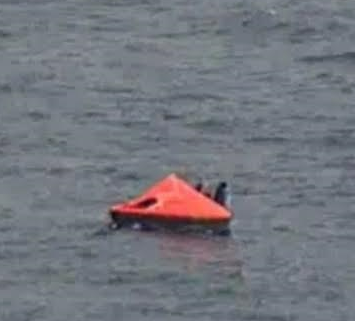 The evacuation and rescue of the crew of 46 from the sinking Alaska Juris was accomplished without any deaths or serious injuries. But crewman Aaron Hell experienced tense moments as he briefly fell into the chill Bering Sea while trying to climb down a ladder along the side of the sinking vessel and board a life raft. During afternoon testimony, Hell described a multinational crew aboard the Alaska Juris that included Japanese, Mexicans and recruits from African nations. He said they all had to find a way to work together to enable operation of the Alaska Juris, an aging vessel built in the 1970s that motors off to remote locations to catch, process and freeze fish. Read the story here 08:27
The evacuation and rescue of the crew of 46 from the sinking Alaska Juris was accomplished without any deaths or serious injuries. But crewman Aaron Hell experienced tense moments as he briefly fell into the chill Bering Sea while trying to climb down a ladder along the side of the sinking vessel and board a life raft. During afternoon testimony, Hell described a multinational crew aboard the Alaska Juris that included Japanese, Mexicans and recruits from African nations. He said they all had to find a way to work together to enable operation of the Alaska Juris, an aging vessel built in the 1970s that motors off to remote locations to catch, process and freeze fish. Read the story here 08:27
Don’t bite on risky lure of ‘catch shares’
 I can’t think of a more appropriate saying to use than “a wolf in sheep’s clothing” to describe the reality of what the Seafood Harvesters of America want to do with our offshore fisheries. The Post and Courier recently published an article and editorial that bought into the sheep’s clothing side. Year-round fishing and better fisheries data are touted. Who could be against that? But there’s a wolf: privatization of our fisheries through a scheme called “catch shares,” where fishermen and corporations are actually given ownership of our fisheries with shares that can be bought or sold like stock on Wall Street. That’s the real reason for the Seafood Harvesters of America’s existence. They’re working hard to ensure commercial fishermen own our fisheries, and in this case it’s our snapper and grouper, starting with a pilot program that could be considered by the South Atlantic Fishery Management Council and NOAA Fisheries next year. Read the op-ed here 08:02
I can’t think of a more appropriate saying to use than “a wolf in sheep’s clothing” to describe the reality of what the Seafood Harvesters of America want to do with our offshore fisheries. The Post and Courier recently published an article and editorial that bought into the sheep’s clothing side. Year-round fishing and better fisheries data are touted. Who could be against that? But there’s a wolf: privatization of our fisheries through a scheme called “catch shares,” where fishermen and corporations are actually given ownership of our fisheries with shares that can be bought or sold like stock on Wall Street. That’s the real reason for the Seafood Harvesters of America’s existence. They’re working hard to ensure commercial fishermen own our fisheries, and in this case it’s our snapper and grouper, starting with a pilot program that could be considered by the South Atlantic Fishery Management Council and NOAA Fisheries next year. Read the op-ed here 08:02
Christian Brun, Maritime Fishermen’s Union official one of 2 men killed in Miramichi crash
 The director general of the Maritime Fishermen’s Union was one of two men killed in a head-on collision Monday morning on Route 11 in Lower Newcastle, Radio-Canada reported. Christian Brun, 46, of Cormier Village was the driver of a car that collided with a car driven by a 69-year-old man from Miscou. The name of the older man was not available. “The Acadian community has just lost a great person,” Gilles Thériault, a fisheries consultant, who was visibly shaken by the news of Brun’s death, told Radio-Canada in French. Thériault called Brun a leader in the fisheries industry, a poet and an artist. We extend our deepest condolences to Christian Brun’s family and friends. Read the story here 19:45
The director general of the Maritime Fishermen’s Union was one of two men killed in a head-on collision Monday morning on Route 11 in Lower Newcastle, Radio-Canada reported. Christian Brun, 46, of Cormier Village was the driver of a car that collided with a car driven by a 69-year-old man from Miscou. The name of the older man was not available. “The Acadian community has just lost a great person,” Gilles Thériault, a fisheries consultant, who was visibly shaken by the news of Brun’s death, told Radio-Canada in French. Thériault called Brun a leader in the fisheries industry, a poet and an artist. We extend our deepest condolences to Christian Brun’s family and friends. Read the story here 19:45
One mariner’s quest to obtain his captain’s license may inspire you
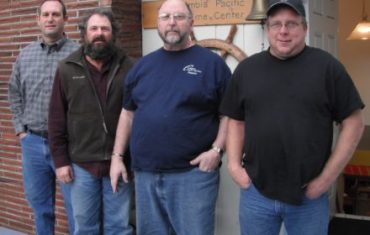 A few years ago I inherited a Victory Marine jacket from my dad. I had worn the jacket from time to time without giving a second thought to the letters “Capt.” embroidered on the chest. Occasionally people would ask, “Are you a captain?” You will note the official designation is master. There is no Coast Guard sanctioned captain’s license. To claim the appellative of captain you will need to set your sights on acquiring a Merchant Mariner Credential with an officer endorsement as Operator of Uninspected Passenger Vessels (OUPV) or master. I am sharing this chronicle in the hopes that it will shed some light on the process and perhaps inspire you to consider the challenge of obtaining your own master’s certificate. Read the article here 18:46
A few years ago I inherited a Victory Marine jacket from my dad. I had worn the jacket from time to time without giving a second thought to the letters “Capt.” embroidered on the chest. Occasionally people would ask, “Are you a captain?” You will note the official designation is master. There is no Coast Guard sanctioned captain’s license. To claim the appellative of captain you will need to set your sights on acquiring a Merchant Mariner Credential with an officer endorsement as Operator of Uninspected Passenger Vessels (OUPV) or master. I am sharing this chronicle in the hopes that it will shed some light on the process and perhaps inspire you to consider the challenge of obtaining your own master’s certificate. Read the article here 18:46
Coast Guard Investigation Hearing, F/V Alaska Juris – Listen Live!
 The U.S. Coast Guard on Monday kicked off a public hearing on its investigation into the abandoning and sinking of the fishing vessel Alaska Juris off the coast of Alaska earlier this year. The 10-day Formal Marine Investigation is open to the public and is taking place at the Henry Jackson Federal Building in Seattle, Washington. The intent of the hearing is to interview witnesses and gather information about the cause of the sinking of the fishing/processor vessel Alaska Juris in the Bering Sea on July 26, 2016. The vessel is believed to have sank in approximately 5,400 feet of water after the crew abandoned ship about 690 miles west of Dutch Harbor Alaska. Listen to Live Proceedings here 18:19
The U.S. Coast Guard on Monday kicked off a public hearing on its investigation into the abandoning and sinking of the fishing vessel Alaska Juris off the coast of Alaska earlier this year. The 10-day Formal Marine Investigation is open to the public and is taking place at the Henry Jackson Federal Building in Seattle, Washington. The intent of the hearing is to interview witnesses and gather information about the cause of the sinking of the fishing/processor vessel Alaska Juris in the Bering Sea on July 26, 2016. The vessel is believed to have sank in approximately 5,400 feet of water after the crew abandoned ship about 690 miles west of Dutch Harbor Alaska. Listen to Live Proceedings here 18:19
Sea Shepherd ships leave to battle Japanese whaling fleet with ropes and stink bombs
 Two ships have left Australia bound for the freezing Southern Ocean to confront the Japanese whaling fleet in an annual high-seas battle, environmental activist group Sea Shepherd said Monday. The organisation’s flagship Steve Irwin departed for Antarctic waters along with fast new patrol vessel Ocean Warrior, built with financial support from the Dutch, British and Swedish lotteries. It has a powerful water cannon and is capable of outrunning the whalers, which an official at Japan’s Fisheries Agency said would be protected by a fleet of patrol boats. “Sea Shepherd has engaged in repeated acts of sabotage over the years. Those actions threaten the lives of Japanese crew members and we cannot tolerate it,” said the official, who declined to give his name. Japan has previously sought court action to halt the anti-whaling campaigns, saying the activists ram their ships, snare propellers with ropes and harass crew with paint and stink bombs. Read the rest here 17:17
Two ships have left Australia bound for the freezing Southern Ocean to confront the Japanese whaling fleet in an annual high-seas battle, environmental activist group Sea Shepherd said Monday. The organisation’s flagship Steve Irwin departed for Antarctic waters along with fast new patrol vessel Ocean Warrior, built with financial support from the Dutch, British and Swedish lotteries. It has a powerful water cannon and is capable of outrunning the whalers, which an official at Japan’s Fisheries Agency said would be protected by a fleet of patrol boats. “Sea Shepherd has engaged in repeated acts of sabotage over the years. Those actions threaten the lives of Japanese crew members and we cannot tolerate it,” said the official, who declined to give his name. Japan has previously sought court action to halt the anti-whaling campaigns, saying the activists ram their ships, snare propellers with ropes and harass crew with paint and stink bombs. Read the rest here 17:17
‘Atlantic’ follows the fortunes of three small fishing communities – in Ireland, Norway and Newfoundland
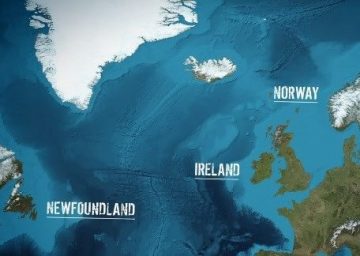 Narrated by Emmy award winner Brendan Gleeson, ‘Atlantic’ follows the fortunes of three small fishing communities – in Ireland, Norway and Newfoundland as they struggle to maintain their way of life in the face of mounting economic and ecological challenges. As the oil majors drive deeper into their fragile seas, and the world’s largest fishing companies push fish stocks to the brink, coastal communities and the resources they rely on are fast approaching a point of no return. This has huge implications for Irish fishing communities and the national exchequer and is even more relevant with news of Brexit and the UK leaving the Common Fisheries Area and with Providence Resources planning a large Irish drilling program in 2017. Filmed in some of the most remote and breathtaking locations in the North Atlantic, and at close quarters with some of the sea’s most captivating characters, Atlantic brings to the fore three very intimate stories from the global resource debate. It explores how modern day communities must learn from the past, in order to secure a brighter future. Watch the trailer, read the rest here 15:29
Narrated by Emmy award winner Brendan Gleeson, ‘Atlantic’ follows the fortunes of three small fishing communities – in Ireland, Norway and Newfoundland as they struggle to maintain their way of life in the face of mounting economic and ecological challenges. As the oil majors drive deeper into their fragile seas, and the world’s largest fishing companies push fish stocks to the brink, coastal communities and the resources they rely on are fast approaching a point of no return. This has huge implications for Irish fishing communities and the national exchequer and is even more relevant with news of Brexit and the UK leaving the Common Fisheries Area and with Providence Resources planning a large Irish drilling program in 2017. Filmed in some of the most remote and breathtaking locations in the North Atlantic, and at close quarters with some of the sea’s most captivating characters, Atlantic brings to the fore three very intimate stories from the global resource debate. It explores how modern day communities must learn from the past, in order to secure a brighter future. Watch the trailer, read the rest here 15:29
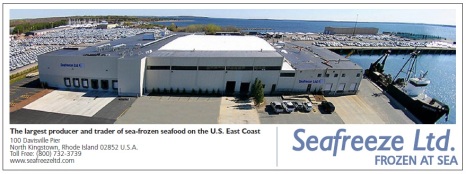
Always Top Quality! Your Seafreeze Ltd. Preferred Price List for December 5th 2016 Has Arrived!
Contact our sales team today @ 401 295 2585 or 800 732 273 Click here for the complete price list from Seafreeze Ltd. – We are Direct to the Source-We are Fishermen-We are Seafreeze Ltd! Visit our website! 11:47
Fogo Island fish harvesters trained to deploy oil boom
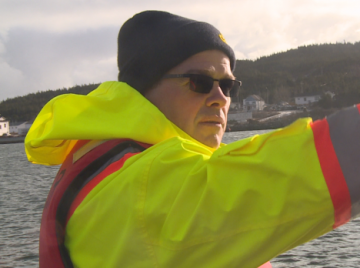 A group of fish harvesters on Fogo Island is now trained to deploy an oil containment boom if a spill were to happen in local fishing areas. The harvesters practiced deploying and recovering a containment boom by the Fisheries and Marine Institute of Memorial University of Newfoundland. “A lot of fisherman are not big on academics and courses,” said Glen Best, a local fisherman. “But this is something they can enjoy because it’s hands on, applies to them and they can use it. It can be a real benefit.” Best and the other fish harvesters started the day with a classroom session and wrapped up on the water in Seldom harbour, deploying the orange boom and its yellow anchors beside a wharf. “We have a long coastline, lots of isolated, rural communities and resources are not always available for a spill.” “It’s in our best interest to be trained and have this equipment and to be able to take care of the problem when it arises,” said Best. Read the story here 11:12
A group of fish harvesters on Fogo Island is now trained to deploy an oil containment boom if a spill were to happen in local fishing areas. The harvesters practiced deploying and recovering a containment boom by the Fisheries and Marine Institute of Memorial University of Newfoundland. “A lot of fisherman are not big on academics and courses,” said Glen Best, a local fisherman. “But this is something they can enjoy because it’s hands on, applies to them and they can use it. It can be a real benefit.” Best and the other fish harvesters started the day with a classroom session and wrapped up on the water in Seldom harbour, deploying the orange boom and its yellow anchors beside a wharf. “We have a long coastline, lots of isolated, rural communities and resources are not always available for a spill.” “It’s in our best interest to be trained and have this equipment and to be able to take care of the problem when it arises,” said Best. Read the story here 11:12
Atlantic Herring MSE Workshop – Dec. 7-8 Live Streaming Information
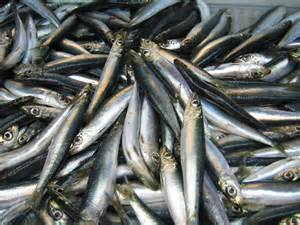 Dear Interested Parties, Please note that registration for the New England Fishery Management Council’s Dec. 7-8 Atlantic Herring Acceptable Biological Catch (ABC) Control Rule Management Strategy Evaluation (MSE) Workshop is closed. We are at room capacity at the meeting venue. However, the Council is inviting anyone who wants to listen to the general workshop presentations to participate via webinar or telephone. Small-group break-out discussions will not be broadcasted through the webinar. Here are the details. Location: Sheraton Harborside Hotel, 250 Market Street, Portsmouth, NH 03810. Time-9:00 a.m. Online access to the meeting will be available. Click here for access. To listen by telephone, dial+1(526)247 8422. The access code is 257-927-141. The agenda, a workshop overview, and all meeting materials are available on the Council’s website at Atlantic Herring MSE Workshop. 10:11
Dear Interested Parties, Please note that registration for the New England Fishery Management Council’s Dec. 7-8 Atlantic Herring Acceptable Biological Catch (ABC) Control Rule Management Strategy Evaluation (MSE) Workshop is closed. We are at room capacity at the meeting venue. However, the Council is inviting anyone who wants to listen to the general workshop presentations to participate via webinar or telephone. Small-group break-out discussions will not be broadcasted through the webinar. Here are the details. Location: Sheraton Harborside Hotel, 250 Market Street, Portsmouth, NH 03810. Time-9:00 a.m. Online access to the meeting will be available. Click here for access. To listen by telephone, dial+1(526)247 8422. The access code is 257-927-141. The agenda, a workshop overview, and all meeting materials are available on the Council’s website at Atlantic Herring MSE Workshop. 10:11
US Signs South Pacific Tuna Treaty Amendments
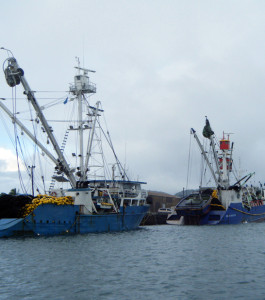 The United States and 16 Pacific Island governments initialed amendments to the Multilateral Treaty on Fisheries at a ceremony in Nadi, Fiji on December 3, 2016. According to the US State Department, the revisions to the Treaty will generate higher economic returns from fisheries for Pacific Island countries, while supporting the continued viable operation of the US fishing fleet in the region. “The positive outcome reflects strong commitments to the Treaty by the parties and relevant stakeholders, including the Pacific Islands Forum Fisheries Agency (FFA) and the US fishing industry, and a further enhancement of political and economic ties between the United States and the Pacific Island region,” the US State Department said in a press statement. Read the rest here 09:07
The United States and 16 Pacific Island governments initialed amendments to the Multilateral Treaty on Fisheries at a ceremony in Nadi, Fiji on December 3, 2016. According to the US State Department, the revisions to the Treaty will generate higher economic returns from fisheries for Pacific Island countries, while supporting the continued viable operation of the US fishing fleet in the region. “The positive outcome reflects strong commitments to the Treaty by the parties and relevant stakeholders, including the Pacific Islands Forum Fisheries Agency (FFA) and the US fishing industry, and a further enhancement of political and economic ties between the United States and the Pacific Island region,” the US State Department said in a press statement. Read the rest here 09:07
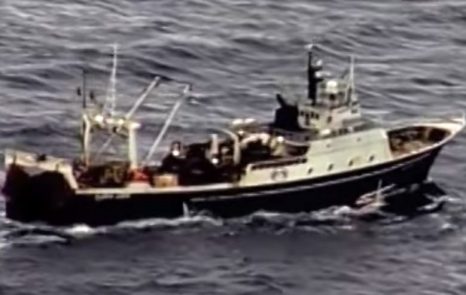
Crew of Alaska Juris abandoned their sinking ship on a mild summer day: Coast Guard hearings begin
When Jonathan Jensen boarded the Alaska Juris last summer for his first stint at sea as a fishery observer, he learned early on that an alarm was supposed to sound should the crew ever need to evacuate. But on July 26, off Alaska’s Aleutian Islands, there was no such emergency signal — indeed, no electricity — as engine-room flooding cut the power and forced the crew to abandon the Washington-based factory trawler. Instead, he says the 46 crew members were forced to rely on word-of-mouth that they all were to assemble on deck, don survival suits and climb into life rafts. “The captain was doing his best to keep it lighthearted and us calm,” Jensen recalls. “He said, ‘When we get back on land, the first round is on me.’ ” Just what caused the flooding — and sinking — of the 229-foot Alaska Juris on a relatively calm summer day in the Bering Sea has not been determined, and will be investigated during two weeks of Coast Guard hearings that begin Monday in Seattle. Read the rest here 21:26
Fish Are Fueling a Battle to Preserve Offshore Rigs as Artificial Reefs along the California Coast
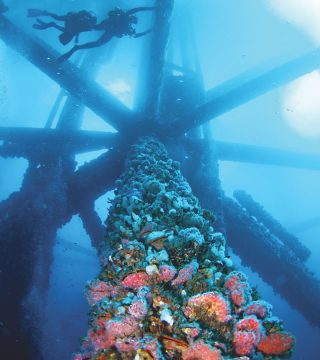 Sprawled on the bottom level of a massive oil rig more than 11 miles from the shores of Long Beach, the half-dozen sea lions grow louder as our boat glides closer. One chews on a fish, holding it with long flippers, while nearly 300 feet above it rises the Ellen, a Mad Max-worthy assemblage of metal tubing and cables that pumps about 2,600 barrels of crude every day. A short distance away, attached by a latticework bridge, is its little sister, the Elly. If it’s strange to see wildlife on such a foreboding structure as it whirs and grinds, it’s stranger to think of all the sea life among the oil platform’s mooring lines and steel legs as
they extend about 260 feet to the ocean floor. “The deeper you go, the more marine life there is,” says Cal State Long Beach marine biologist Chris Lowe. In 2010, Governor Arnold Schwarzenegger signed AB2503, otherwise known as the Rigs-to-Reefs Law, which permits certain oil and gas platforms to be left in place rather than completely removed once their drilling days are done. It was a third attempt to pass such a law. Read the story here 17:00
Sprawled on the bottom level of a massive oil rig more than 11 miles from the shores of Long Beach, the half-dozen sea lions grow louder as our boat glides closer. One chews on a fish, holding it with long flippers, while nearly 300 feet above it rises the Ellen, a Mad Max-worthy assemblage of metal tubing and cables that pumps about 2,600 barrels of crude every day. A short distance away, attached by a latticework bridge, is its little sister, the Elly. If it’s strange to see wildlife on such a foreboding structure as it whirs and grinds, it’s stranger to think of all the sea life among the oil platform’s mooring lines and steel legs as
they extend about 260 feet to the ocean floor. “The deeper you go, the more marine life there is,” says Cal State Long Beach marine biologist Chris Lowe. In 2010, Governor Arnold Schwarzenegger signed AB2503, otherwise known as the Rigs-to-Reefs Law, which permits certain oil and gas platforms to be left in place rather than completely removed once their drilling days are done. It was a third attempt to pass such a law. Read the story here 17:00
South Atlantic Fishery Management Council meeting in Atlantic Beach NC December 5 – 9, 2016
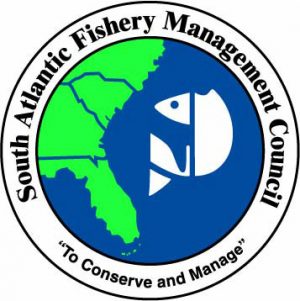 The public is invited to attend the South Atlantic Fishery Management Council to be held in Atlantic Beach NC at the DoubleTree by Hilton Atlantic Beach Oceanfront. Read the Meeting Agenda Click here, Briefing Book – June 2016 Council Meeting Click here Webinar Registration: Listen Live, Click here 15:10
The public is invited to attend the South Atlantic Fishery Management Council to be held in Atlantic Beach NC at the DoubleTree by Hilton Atlantic Beach Oceanfront. Read the Meeting Agenda Click here, Briefing Book – June 2016 Council Meeting Click here Webinar Registration: Listen Live, Click here 15:10
Lessons from accidental oyster sanctuaries
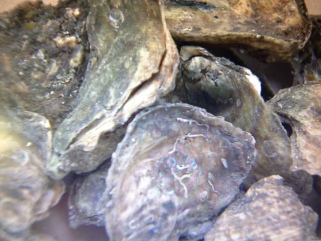 The oysters came up in the dredge like I hadn’t seen them in 50 years (and rarely even back then): huge and clumped together and bedecked with sponges and all manner of marine organisms, including younger oysters, thriving in the niches of the natural reef we’d just busted into. It was last winter, and we’d been dragging the bottom of Virginia’s lower York River for a state crab survey. By chance we’d nicked into an oyster sanctuary, undisturbed for decades. It wasn’t the kind of official sanctuary over which Maryland’s oystermen are wrangling with scientists and environmentalists — the watermen wanting more harvest, others wanting the benefits to the Chesapeake Bay’s water quality and the habitat of an undisturbed oyster reef. The little reef we struck in Virginia, not even designated on charts or given special status in law, is nonetheless well protected. Its enduring and pristine status comes from one of the world’s largest military-industrial complexes, concentrated here in the lower Chesapeake. Read the story here 14:16
The oysters came up in the dredge like I hadn’t seen them in 50 years (and rarely even back then): huge and clumped together and bedecked with sponges and all manner of marine organisms, including younger oysters, thriving in the niches of the natural reef we’d just busted into. It was last winter, and we’d been dragging the bottom of Virginia’s lower York River for a state crab survey. By chance we’d nicked into an oyster sanctuary, undisturbed for decades. It wasn’t the kind of official sanctuary over which Maryland’s oystermen are wrangling with scientists and environmentalists — the watermen wanting more harvest, others wanting the benefits to the Chesapeake Bay’s water quality and the habitat of an undisturbed oyster reef. The little reef we struck in Virginia, not even designated on charts or given special status in law, is nonetheless well protected. Its enduring and pristine status comes from one of the world’s largest military-industrial complexes, concentrated here in the lower Chesapeake. Read the story here 14:16
Big changes in the air over little menhaden? – Hearings examine ecological value, catch allocation of forage fish species
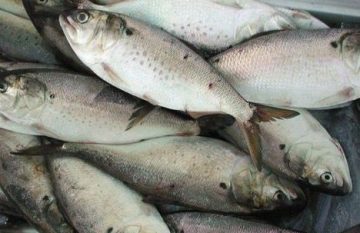 The Atlantic States Marine Fisheries Commission, which regulates near-shore fishing from Maine to Florida — including the Chesapeake Bay — has invited public comment on several questions about future management of the menhaden fishery at hearings all along the coast. Sessions in the Bay watershed begin Monday, Dec. 5. The most important issue under consideration involves setting new “reference points” regulating the catch of menhaden that would account for their value to other fish and predators — not just their commercial importance. But the commission also is weighing whether to shake up how the total catch is distributed along the coast. Read the slanted story here Review Public information document for Amendment 3 to the Interstate Fishery Management Plan For Atlantic Menhaden here 12:11
The Atlantic States Marine Fisheries Commission, which regulates near-shore fishing from Maine to Florida — including the Chesapeake Bay — has invited public comment on several questions about future management of the menhaden fishery at hearings all along the coast. Sessions in the Bay watershed begin Monday, Dec. 5. The most important issue under consideration involves setting new “reference points” regulating the catch of menhaden that would account for their value to other fish and predators — not just their commercial importance. But the commission also is weighing whether to shake up how the total catch is distributed along the coast. Read the slanted story here Review Public information document for Amendment 3 to the Interstate Fishery Management Plan For Atlantic Menhaden here 12:11
Operation Jolly Roger: inside the secret world of Scotland’s fishermen pirates
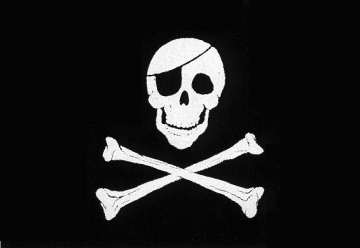 An underground intelligence network aimed at helping hundreds of fishermen avoid getting caught fishing illegally around Scotland’s coast has been condemned as “blatant piracy”. Fishermen intent on breaking the law are tracking the movements of the Scottish Government’s three fisheries patrol boats – the Minna, Jura and Hirta – to try and hamper them from policing the seas, boarding boats and seizing their illegal catches. The three Marine Protection Vessels (MPVs) regularly patrol the coastline on the lookout for boats breaching the law by taking “black fish” in excess of their quotas, fishing in conservation areas or using illegal techniques, such as electric fishing. But a social media site followed by 670 people is posting daily sightings and photos of the MPVs so that illegal fishermen can keep out of their way. It has also published abusive comments about the government’s Marine Scotland agency and the former fisheries minister, SNP MSP Richard Lochhead. The revelations have prompted anger from campaigners and politicians, and a plea for respect from the Scottish Government. Fishermen have responded by saying they are defending their livelihood because “red tape is killing us”. Read the story here 10:23
An underground intelligence network aimed at helping hundreds of fishermen avoid getting caught fishing illegally around Scotland’s coast has been condemned as “blatant piracy”. Fishermen intent on breaking the law are tracking the movements of the Scottish Government’s three fisheries patrol boats – the Minna, Jura and Hirta – to try and hamper them from policing the seas, boarding boats and seizing their illegal catches. The three Marine Protection Vessels (MPVs) regularly patrol the coastline on the lookout for boats breaching the law by taking “black fish” in excess of their quotas, fishing in conservation areas or using illegal techniques, such as electric fishing. But a social media site followed by 670 people is posting daily sightings and photos of the MPVs so that illegal fishermen can keep out of their way. It has also published abusive comments about the government’s Marine Scotland agency and the former fisheries minister, SNP MSP Richard Lochhead. The revelations have prompted anger from campaigners and politicians, and a plea for respect from the Scottish Government. Fishermen have responded by saying they are defending their livelihood because “red tape is killing us”. Read the story here 10:23
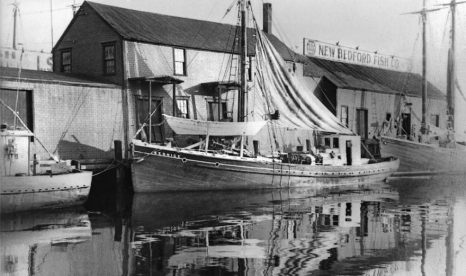
Trivia: Sail back to the early days of New Bedford fish dealers
Chatham-born Linus S. Eldridge went to sea as a teenager. By the time of his marriage in 1902, however, he had left fishing to become a fish dealer. He and his wife, Harriet Nelson Dexter, settled in her hometown of Mattapoisett, operated a fish trap there, and began dealing in seafood. They bought scallops and quahogs from local fishermen, stocked the goods in their garage and resold them to wholesalers. Years later, to break into the New Bedford market, the Eldridges had to outmaneuver the politically connected J. S. Childs family, who ran the New Bedford Fish Company on Pier 4, eventually buying them out. Boats began landing fish there for Eldridge in 1928. Read the story here 09:53
Coast Guard conducts medevac from fishing vessel off Oahu
 The Coast Guard medevaced the master of the 70-foot fishing vessel Lady J3 about 41 miles north of Oahu Saturday morning. An MH-65 Dolphin helicopter crew from Air Station Barbers Point safely medevaced the 36-year-old man to Queens Medical Center in Honolulu for treatment. He was reportedly suffering from swelling to his lower extremities and was unable to stand. Coast Guard watchstanders at Joint Rescue Communications Center Honolulu received a request for the medevac from the NOAA Fisheries observer aboard the Lady J3 mid-morning Friday. The vessel was 176 miles north of Kauai at the time, heading toward Oahu and maintained a six-hour communications schedule with Coast Guard Sector Honolulu watchstanders. By the evening the master’s condition had deteriorated and he was having trouble breathing. At the recommendation of the Coast Guard flight surgeon the vessel continued to make best course and speed toward Oahu to close the distance and bring them into range of the Coast Guard Dolphin crew. The medevac was conducted at first light to bring the master to a higher level of medical care. Weather conditions at the time of the hoist were reportedly 12 mph winds with seas to 7 feet, haze and showers. link 09:26
The Coast Guard medevaced the master of the 70-foot fishing vessel Lady J3 about 41 miles north of Oahu Saturday morning. An MH-65 Dolphin helicopter crew from Air Station Barbers Point safely medevaced the 36-year-old man to Queens Medical Center in Honolulu for treatment. He was reportedly suffering from swelling to his lower extremities and was unable to stand. Coast Guard watchstanders at Joint Rescue Communications Center Honolulu received a request for the medevac from the NOAA Fisheries observer aboard the Lady J3 mid-morning Friday. The vessel was 176 miles north of Kauai at the time, heading toward Oahu and maintained a six-hour communications schedule with Coast Guard Sector Honolulu watchstanders. By the evening the master’s condition had deteriorated and he was having trouble breathing. At the recommendation of the Coast Guard flight surgeon the vessel continued to make best course and speed toward Oahu to close the distance and bring them into range of the Coast Guard Dolphin crew. The medevac was conducted at first light to bring the master to a higher level of medical care. Weather conditions at the time of the hoist were reportedly 12 mph winds with seas to 7 feet, haze and showers. link 09:26
Monhegan Island is the wrong place for wind turbines
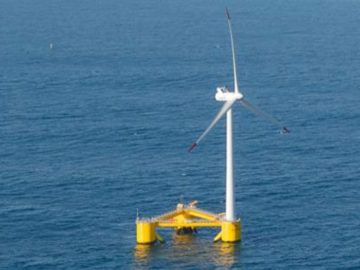 A recent Press Herald article described Protect Monhegan as a “small group” of island residents seeking the relocation of wind turbines to be placed little more than two miles from our island. While we may be small in terms of the big institutions we are up against – Maine’s largest public university (the University of Maine), largest construction company (Cianbro Corp.) and second-largest electric utility (Emera Maine) – we represent the views of nearly half of Monhegan Island residents, as well as many other seasonal residents and visitors from around the world. Like many of us who live here, they simply can’t understand why – of all the places along Maine’s 3,500-mile coastline – the waters off Monhegan must be the place to experiment with two 585-foot wind turbines. The fact is, the process that led to this decision has been anything but transparent. What was originally presented as a one-eighth-scale turbine, which would be tested for two five-month periods, has morphed into a 20-year-long major project, with industrial-scale wind turbines on floating towers and backed by $48 million of taxpayer money. Read the rest here 08:35
A recent Press Herald article described Protect Monhegan as a “small group” of island residents seeking the relocation of wind turbines to be placed little more than two miles from our island. While we may be small in terms of the big institutions we are up against – Maine’s largest public university (the University of Maine), largest construction company (Cianbro Corp.) and second-largest electric utility (Emera Maine) – we represent the views of nearly half of Monhegan Island residents, as well as many other seasonal residents and visitors from around the world. Like many of us who live here, they simply can’t understand why – of all the places along Maine’s 3,500-mile coastline – the waters off Monhegan must be the place to experiment with two 585-foot wind turbines. The fact is, the process that led to this decision has been anything but transparent. What was originally presented as a one-eighth-scale turbine, which would be tested for two five-month periods, has morphed into a 20-year-long major project, with industrial-scale wind turbines on floating towers and backed by $48 million of taxpayer money. Read the rest here 08:35
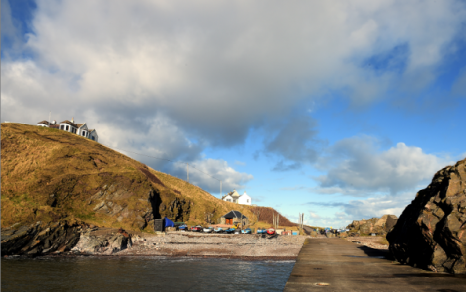
Court date set for Cove Harbour legal battle
A court date has been set for a legal battle between a community of traditional fishermen and a landowner who wants to evict them from an historic Aberdeen harbor. Vessels have been berthed within the small natural bay of Cove Harbour for generations. But since last summer, the owners of the around 11 boats that still remain have been locked in an ongoing conflict with a surgeon who now owns the land. Pralhad Kolhe, who lives in the white house overlooking the harbour, has put in place a number of preventative measures to obstruct the fishermen’s ability to access their boats, including large boulders, rubble, barricades and signs as part of his efforts to evict them. Read the story here 21:19
Cantwell, Murray Push to Declare Six Fisheries Disasters in Washington State
 U.S. Senators Maria Cantwell (D-WA) and Patty Murray (D-WA) sent a letter to Secretary of Commerce Penny Pritzker calling for a declaration of commercial fisheries failures for six pending fishery disaster requests. Fishing communities up and down Washington’s coast have suffered through several years of lower-than-expected catch. A federal fishery disaster declaration would make communities eligible for funding for projects such as fisheries recovery, job training, and infrastructure investments in the communities hardest hit. Commerce Secretary’s designation would provide relief to Coho, Sockeye, and Dungeness fishermen and their communities. Read the press release here 18:06
U.S. Senators Maria Cantwell (D-WA) and Patty Murray (D-WA) sent a letter to Secretary of Commerce Penny Pritzker calling for a declaration of commercial fisheries failures for six pending fishery disaster requests. Fishing communities up and down Washington’s coast have suffered through several years of lower-than-expected catch. A federal fishery disaster declaration would make communities eligible for funding for projects such as fisheries recovery, job training, and infrastructure investments in the communities hardest hit. Commerce Secretary’s designation would provide relief to Coho, Sockeye, and Dungeness fishermen and their communities. Read the press release here 18:06
A mystery at sea unfolds in New Bedford
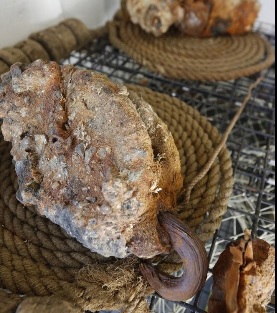 A mystery is unfolding at the New Bedford Fishing Heritage Center. It all started last month when the fishing vessel Jean Marie out of Newport, North Carolina raised its nets and found pieces of wood, a five-part block with wooden shives, a single block with a hook on it, a knee brace and other pieces of wreckage. The fishing vessel was fishing in 55 fathoms of water (between 250 and 300 feet), just east of the Great South Channel shipping lanes. It is not uncommon for fishermen to find strange objects in their nets, but what is unusual is that the crew of the Jean Marie recorded the location of their find about 50 miles east-southeast of Nantucket, said Victor T. Mastone, director and chief archaeologist with the state Board of Underwater Archaeological Resources. The nautical position is North 41 08.52 x West 69 07.39. On Friday, a few weeks after the discovery, a state official, a university professor, a fishing captain and Heritage Center officials met for a little over an hour to view the materials and to try and figure out exactly what they have on their hands. View more images, and Read the story here 16:48
A mystery is unfolding at the New Bedford Fishing Heritage Center. It all started last month when the fishing vessel Jean Marie out of Newport, North Carolina raised its nets and found pieces of wood, a five-part block with wooden shives, a single block with a hook on it, a knee brace and other pieces of wreckage. The fishing vessel was fishing in 55 fathoms of water (between 250 and 300 feet), just east of the Great South Channel shipping lanes. It is not uncommon for fishermen to find strange objects in their nets, but what is unusual is that the crew of the Jean Marie recorded the location of their find about 50 miles east-southeast of Nantucket, said Victor T. Mastone, director and chief archaeologist with the state Board of Underwater Archaeological Resources. The nautical position is North 41 08.52 x West 69 07.39. On Friday, a few weeks after the discovery, a state official, a university professor, a fishing captain and Heritage Center officials met for a little over an hour to view the materials and to try and figure out exactly what they have on their hands. View more images, and Read the story here 16:48
D.B. Pleschner: ENGO Extremists manufacture anchovy ‘crisis’ where none exists
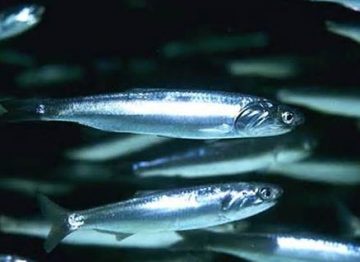 When the National Marine Fisheries Service (NMFS) recently reapproved the 2017 annual catch limit for the central stock of anchovy at 25,000 metric tons (mt), environmental extremists immediately cried foul. Press releases with doomsday headlines claimed that the anchovy catch limit is now higher than the total population of fish in the sea. Environmentalists claim the anchovy resource has “collapsed” and the current catch limit is dangerously high. But is the anchovy population really decimated, or are these alarmists simply manufacturing another anti-fishing crisis? In reality, anchovies are now amazingly abundant from San Diego to Northern California. Scientific data as well as fishermen’s observation bear this out: Read the op-ed here 12:22
When the National Marine Fisheries Service (NMFS) recently reapproved the 2017 annual catch limit for the central stock of anchovy at 25,000 metric tons (mt), environmental extremists immediately cried foul. Press releases with doomsday headlines claimed that the anchovy catch limit is now higher than the total population of fish in the sea. Environmentalists claim the anchovy resource has “collapsed” and the current catch limit is dangerously high. But is the anchovy population really decimated, or are these alarmists simply manufacturing another anti-fishing crisis? In reality, anchovies are now amazingly abundant from San Diego to Northern California. Scientific data as well as fishermen’s observation bear this out: Read the op-ed here 12:22



































